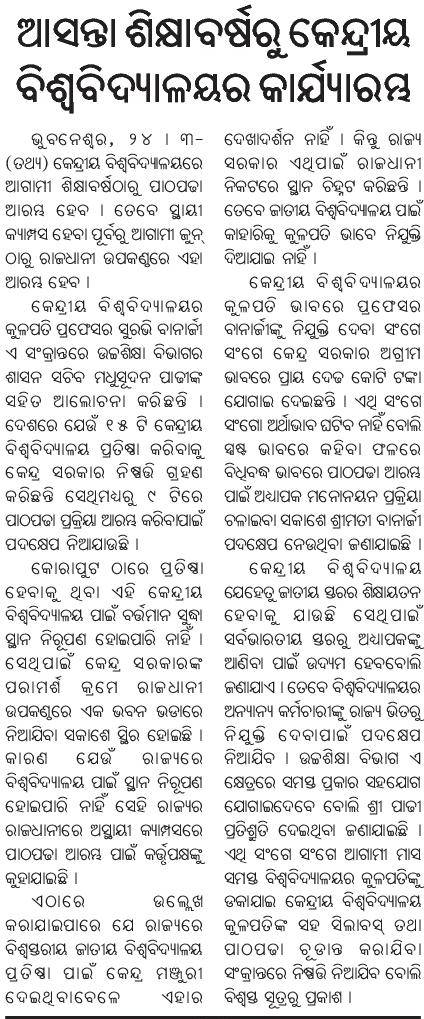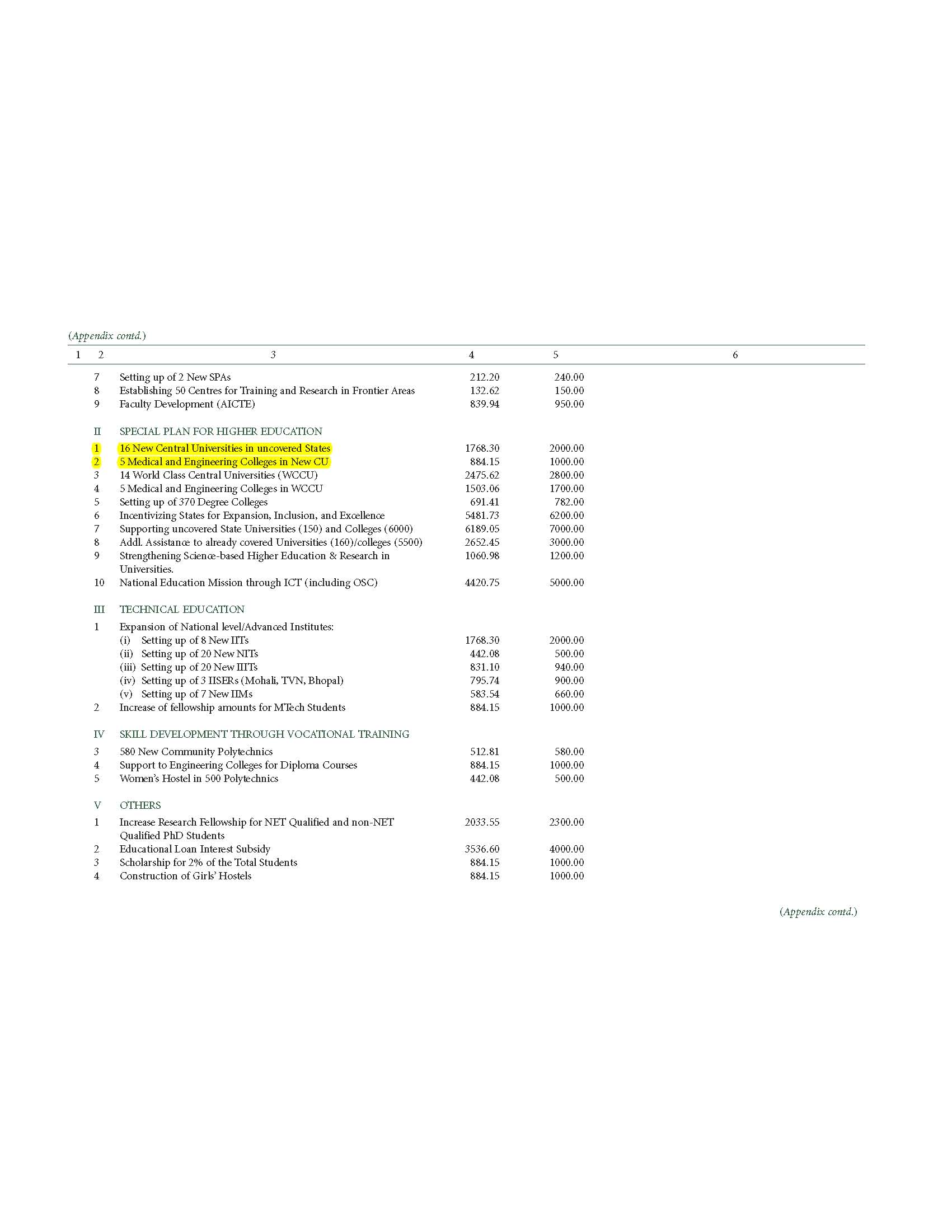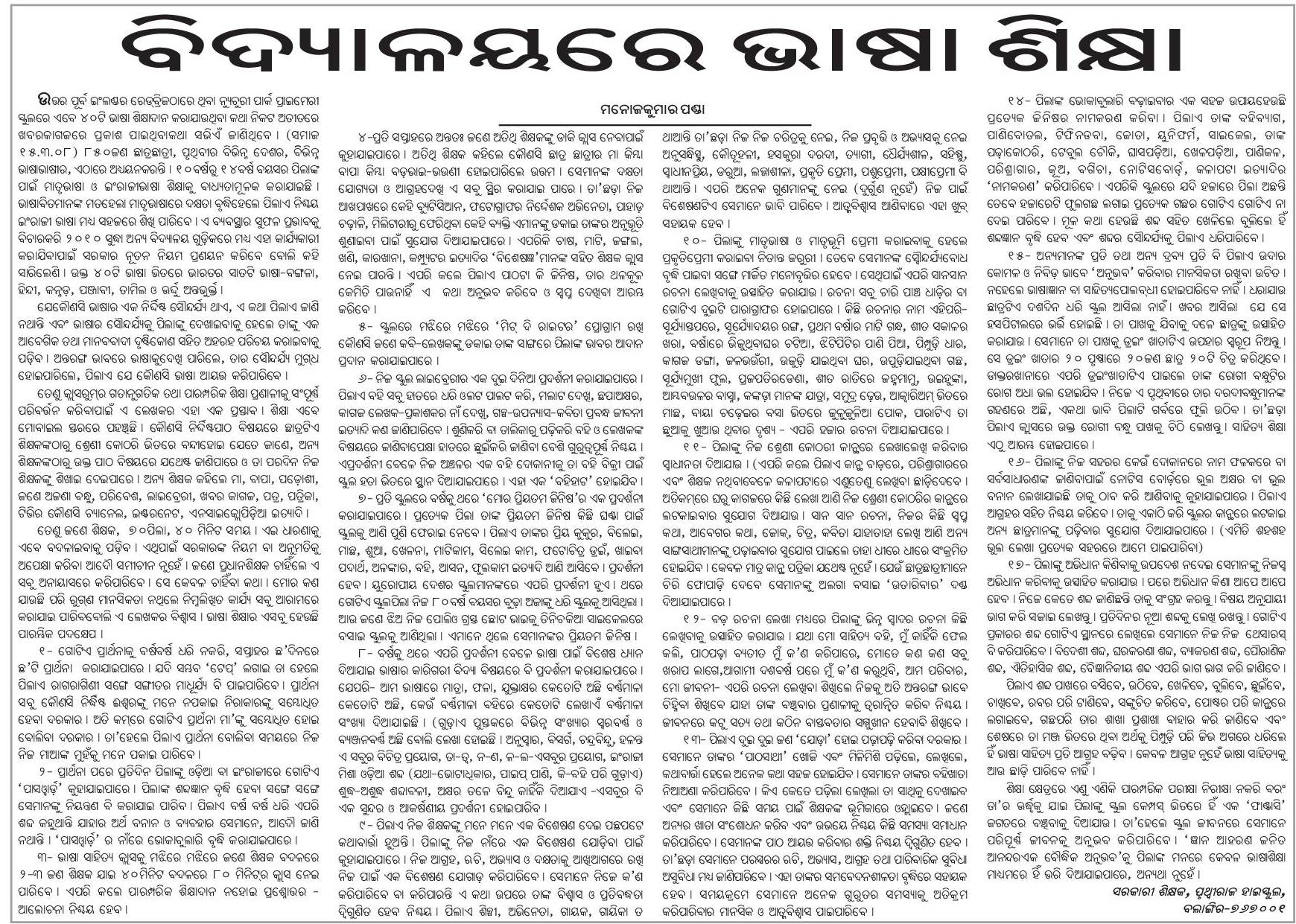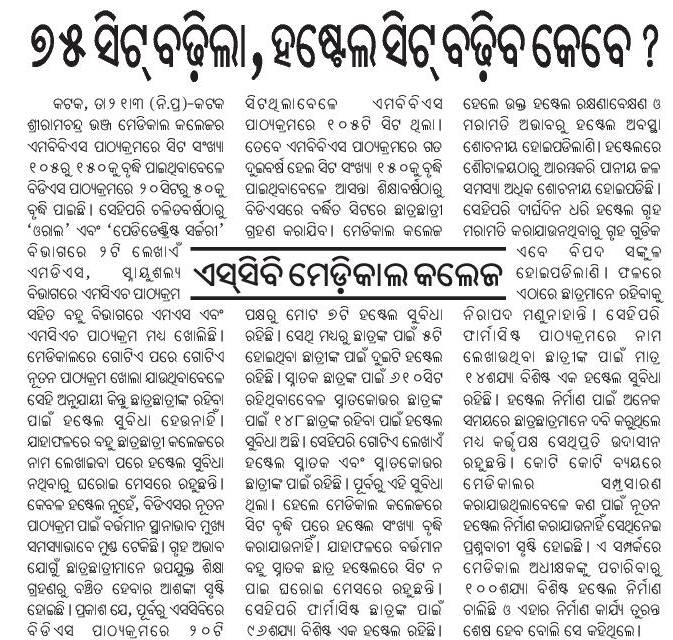Author Archive
Following are excerpts from a recent (March 19, 2009) report in Business Standard.
The Anil Agarwal-promoted Vedanta University will begin operations by mid-2011 in Puri, Orissa. Agarwal plans to make Vedanta University into a world-class, multi-disciplinary varsity with students from across India and around the world.
The university, being built with an investment of Rs 15,000 crore, will come up in three phases. Phase one will be operational by mid-2011 with an investment of Rs 5,000 crore. The first academic session at the university was to begin in 2009 but the project has been delayed by two years due to a land acquisition tussle with the local residents of Puri.
… To begin with, the university will start operations with around 1,000 students in the arts and science streams. The student intake, however, will grow steadily to reach an ultimate goal of 100,000 students. The university board on the other hand is still working on the modalities involving admission and fee structure.
“We have all the necessary approvals in place from various academic authorities in the country. However, certain details regarding the admission process need to be worked on. We plan to produce professionals far superior to what any other institute can produce in the country,” said C V Krishnan, CEO, Vedanta University.
The university has awarded construction contracts of the academic buildings as well as the hospital at the project site to companies like Larsen & Toubro, Shapoorji Pallonji, Ahluwalia, B E Billimoria and Simplex. Architects Ayers Saint Gross of Baltimore, USA, have prepared the master plan of the University.
The campus will have a super specialty hospital, which will answer a long standing need for providing comprehensive and specialised patient care for the people of Orissa and eastern India. Both the University and the hospital are ‘not-for-profit’ institutions.
World-renowned hospital architects are developing the design for the hospital, Perkins and Will from USA. The university will also establish research parks to promote science and technology-based entrepreneurship and support an innovation-driven incubator. E-learning programmes will also be launched in future.
“We will be recruiting young professors with inclination towards research. We have already hired a US-based recruitment agency to appoint faculty for the university,” added Krishnan.
April 5th, 2009
Following is excerpted from a report in Telegraph.
Twelve new central universities that India is launching will start by offering only research programmes — MPhil and PhD — unlike existing varsities that are controlled by the Centre.
The new universities will focus exclusively on research, at least initially, though they can later expand and offer undergraduate and postgraduate courses not involving research as well, top government officials have said.
… But the 12 new universities will initially offer only research programmes, human resource development (HRD) ministry sources said.
“We will leave it open to each university to decide what research programmes they want to start with. At least one university wants to start with only MPhil courses. That is fine,” a source said.
The 12 new universities are to come up in Tamil Nadu, Kerala, Karnataka, Orissa, Rajasthan, Jammu and Kashmir, Punjab, Haryana, Himachal Pradesh, Gujarat, Jharkhand and Bihar.
At least three of the 12 are expected to start offering courses from the 2009 academic session itself, though more may begin.
The strategy to focus only on research initially at the new universities is based on three major considerations, sources said.
One, it will allow the universities to initially “find their feet” without the pressure of a large number of students, officials argue.
April 5th, 2009
Recently Educationtimes.com, a part of of Times of India, together with Gfk Mode, has done a ranking of universities across India in various disciplines. There methodology, in their own words, was as follows:
This survey was open to prominent universities across India and invitations were sent to 225 universities.
Among the 225 prominent universities invited, 136 participated. This constitutes around 61% participation.
Some universities refused to participate. Whereas many universities could not provide the required information within our time frame.
The contact persons at the universities were: the registrars, deputy registrars, principal, dean or the administrative heads.
That is it. They sent the surveys. Regardless of whether people participated or not; regardless of the veracity of what was given back; they made a ranking.
The parameters they used may seem reasonable to many, but to me there is a very simple way to rank Universities and Colleges in India. Just use faculty quality as the first parameter and if their is a tie then use the student quality as the second parameter. That’s it!
April 1st, 2009
Following is an excerpt from a report in Business Standard:
Faced with a huge shortage of skilled manpower in the growing space of welding technology, the Indian Institute of Welding (IIW) is planning to train and certify at least 1,000 students per annum across 33 centres in India beginning July this year.
It is planning to set up two training centres each one in Orissa and Kolkata which, along with the existing two at Kochin and Bangalore, and will conduct nationwide examinations for both short term and long term courses. The certificate will be equivalent to the Bachelor of Engineering (BE) affiliated to the International Institute of Welding (InIW), France.
The move assumes significance mainly because of growing investment on infrastructure. The government has allocated a sum of Rs 320,000 crore for infrastructure development during the current fiscal year which, if implemented, will use 7 million tonnes of steel and about 28,000 tonnes of welding materials. By 2020, India’s demand for welding materials is estimated to range between 4- and 4.5 million tonnes on a projected steel consumption of 100 million tonnes from the current use of 2 million tonnes and 55 million tonnes respectively. This will require at least about 1.5 million trained manpower for welding.
“IIW-trained technocrats may find jobs not only in India but also abroad as welding engineers are required everywhere,” said C C Girotra, president of IIW.
The institute has trained so far 145 engineers under the auspices of InIW who are placed in the country’s largest engineering including Larsen & Toubro. A number of them have started their own business in steel welding while other graduates opted their career abroad. …
The course fee varies between Rs 27,000 and Rs 60,000 per student for the period between 4-6 weeks.
March 30th, 2009
The following links are mentioned in http://savageminds.org/2009/03/26/youtube-edu/. (Thanks to Abi for pointing to it.)
March 29th, 2009
Update: The news item in Samaja.

Tathya writes about this. Following are some excerpts.
Central University of Orissa (CUO) will begin classes from June. … While CUO will have its campus in Koraput, to begin with a temporary campus near Bhubaneswar is being looked out to start classes from next Educational Year.
That is why Professor Banerjee has requested the Government of Orissa in Higher Education department to provide a rented accommodation.
Mr.Padhi has agreed to provide all out support for the institution.
Professor Banerjee is interested to make it a different institution and is inclined to start at least 30-35 departments in the newly carved out Centre of Learning.
However to start with the CUO will have 5 subjects and later it will go on including further, said sources.
… Those CUs, which has not identified land for the institution in the designated place, those can start it from the Capital City of the state, said sources.
So Professor Banerjee is busy in organizing things for facilitating classes from next June. Faculty hiring is the foremost in her mind and as she is eager to make it a top class university, the VC wants to rope in best of the talents from the country.
She is also interested to open Medical College in the University, but it will take time.
… Professor Baral of Arizona State University said only five of the 15 new central universities will have a medical college in the first phase (i.e.,during the 11th plan).
So the ability of the VC Professor Banerjee will be tested in whether she is able to get a medical and engineering college to the Central University of Orissa, feel the educationist.
Considering that the CUO is to be located in Koraput, in the most backward area, KBK, of India, Prof. Banerjee must do her best to make the right arguments at the earliest and get a medical and engineering college to this university, argued Professor Baral.
Page 522 of the document at http://planningcommission.nic.in/plans/planrel/fiveyr/11th/11_v3/11th_vol3.pdf given below shows that only 5 of the new central universities will have medical and engineering colleges in the first phase, I.e., during the 11th plan.

March 25th, 2009
Rohit Kumar, a student at IIT Khargpur died today because of lack of facilities at BC Roy Hospital (should not really be called an hospital). Having spent a night at that hospital after an insect flew inside my ear, I have first hand experience involving BC Roy as well as the lack of proper medical facilities at Kharagpur.
The bigger tragedy is that when the lack of healthcare facilities in BC Roy hospital was pointed out by the students three years ago in the student newspaper, the authorities decided to punish the student paper and shut it down for some time.
I hope this time the authorities will take it seriously and find a long term solution. The current director of IIT Kharagpur has in the past implemented many innovative and bold ideas and here is a bold idea (bold in the context of West Bengal and its unions) that may solve the problem.
IIT needs to close down BC Roy operations and contract its health care operations to a reputed private company such as Apollo. (The company Vedanta is doing something like that.) A student and employee committee can come up with a specification of what medical services should be available on campus and invite bids from reputed health care companies and then pick the best. I don’t think money would be a problem. This is the way to go as health care is not a core competency of IIT Kharagpur and someone very good in that field should be the one taking care of the health care facilities at IIT Kharagpur.
This should be the model used in other universities and institutes that are in places without good health care facilities; or perhaps in all universities and institutes. Note that a lot of the proposed new central universities are being located in small towns without proper health care facilities. This is the time to take this issue into account and plan properly.
March 23rd, 2009
Mr. Panda has suggested many nice ideas that a school headmaster can easily incorporate. I hope many of them read this article and try to implement at least some of the ideas mentioned in it.

March 23rd, 2009

March 23rd, 2009
Following is from a report in Hindu.
Southern Railway is to start a medical college with private participation by making use of the existing medical facilities available at its hospital in Perambur here.
The Chief Medical Director of Southern Railway on Friday called for expression of interest from resourceful medical institutions in the country for establishing and running the college at the cost of institutions as per the Medical Council of India regulations. The institutions should have at least 10 years’ experience in running a medical college and attached hospital as per the MCI norms. Foreign institutions can also participate in the bid, provided they comply with respective foreign medical regulatory authority norms.
Southern Railway is now running a 500-bed hospital on a 15-acre site in Perambur and the same is to be shifted soon to new premises. The existing hospital premises and the proposed new hospital complex will be available for establishing the medical college.
According to the Medical Director, the Perambur railway hospital has basic specialities in 15 disciplines and super-specialities in three disciplines.
The hospital has been recognised by the National Board of Examinations for recognition in postgraduate training. International institutions such as Royal College of Surgeons had also accredited the hospital for imparting training in PG courses.
ECOR has a central hospital in Mancheswar. It was inaugurated in Nov 27, 2007. Following is an excerpt from the press release.
Sri K. C. Jena, Chairman, Railway Board and Ex-officio Principal Secretary, Govt. of India inaugurated the Central Hospital of East Coast Railway at Mancheswar today. The hospital which started as a Health Unit in 1982 under Mancheswar Workshop was declared to be converted to 100 bedded Central Hospital for ECoR on 09.10.2005. In the first phase, construction has been completed with 60 beds, 4 bedded ICU and OT complex with a sanctioned cost of Rs. 1.88 crores.
The second phase expansion of the Central Hospital with 40 beds with maternity and pediatric wards and 8 Nos. of Special Cabins at a cost of Rs. 1.98 crores will be taken up shortly.
This hospital which has tied up with Kalinga Hospital Ltd., Bhubaneswar, Yoshada Hospital, Secunderabad and Seven Hills Hospital, Visakhapatnam is presently catering to the medical and health care needs of almost 36000 employees of Mancheswar Workshop, East Coast Railway Headquarters, Construction Organisation, Railway Recruitment Board (RRB), Railway Electrification (RE), Railway Claims Tribunal (RCT) and retired railway employees residing at Bhubaneswar and their family members.
We should watch out how this hospital grows and may be in 5 years, ECOR could be pushed to follow the path of Southern railway and have a medical college attached to this hospital.
March 21st, 2009
Following is excerpted from a report in Telegraph.
The Centre has approved a request by the Manipur government to set up a campus of the new Indira Gandhi National Tribal University in the state and asked the chief minister to allocate land for it.
The human resource development ministry has authorised the IGNTU, India’s first university dedicated to tribal studies, to open a campus in the hills of Manipur, The Telegraph has learnt.
… Manipur, sources said, was told of the approval just before the announcement of elections. But the formal sanction from the IGNTU governing body — critical for setting up a new campus — came only earlier this week.
The IGNTU was started last year at Amarkantak in Madhya Pradesh but its planned campus there is tangled in controversy with forest officials and some religious leaders opposed to chopping of trees to build the university.
Manipur is the first state whose request for an IGNTU campus has been accepted. Several other states with a significant tribal population had also asked for a campus.
The Congress rules both at the Centre and in Manipur.
With the Centre’s approval, the state may now actually develop the first fully operational campus of the IGNTU unless the dispute over Amarkantak is resolved, sources said. The headquarters of the IGNTU will however remain in MP, the sources said.
The government, through the IGNTU vice-chancellor, has written to chief minister Okram Ibobi Singh asking him to allocate 300 acres of land in the state for the campus, officials said. The state government is likely to offer land for the campus in Senapati, it is learnt.
…The tribal university is expected to offer, in the coming years, the country’s best academic opportunities in tribal literature, culture, language, music, arts and scriptures.
The idea behind the university is to provide students from a tribal background an education that they can identify with and which can train them in helping safeguard and develop their culture.
Classes in select subjects started last year from a temporary campus at Amarkantak.
March 20th, 2009
Following is an excerpt from a report in Business Standard.
“Construction work on NISER-Bhubaneswar is expected to take off within two months and the entire campus is scheduled to be functional within four years. Once the NISER-Bhubaneswar campus is fully operational, it would have an intake of about 2,000 students which may later scale up to 4,000”, Abhaya Kumar Nayak, registrar, NISER-Bhubaneswar told Business Standard. NISER-Bhubaneswar which is currently operating out of the campus of the Institute of Physics has an intake of around 100 students. The institute is presently offering a five-year integrated MSc programme , an MSc cum Phd programme and individual Phd programmes in four basic sciences- physics chemistry, biology and mathematics.
New courses on computer sciences, earth and planetary sciences as well as engineering sciences are proposed to be introduced after the full-fledged campus of NISER-Bhubaneswar becomes operational.
NISER-Bhubaneswar would be a Centre of Excellence for teaching and research in four basic areas of science. Apart from separate academic blocks for different areas of science education and research, the NISER-Bhubaneswar campus will have planned academic and residential townships with all modern amenities and recreational facilities.
March 19th, 2009
Following is an excerpt from a report in Deccan Herald.
It is the first NSD chapter to be started outside Delhi. Union Minister of Culture Ambika Soni, after inaugurating the institute at Gurunanak Bhavan, said that the Centre would set up four more chapters of NSD at Kolkata, Jammu and Kashmir, Maharashtra and North Eastern states in the coming days.
Because of interest shown by theatre artistes and officers of Karnataka the first chapter of the NSD had been set up in Karnataka at the earliest. The State government had allocated two acres of land to establish the institute. “I request the Government to allow the school to function in Gurunanak Bhavan till the new establishment is ready completely,” she said.
She said that the Ministry of Culture had submitted a proposal on introduction of theatre activities in higher education through National School of Drama. The ministry felt that involvement of students in theatre activities would help increasing richness of culture.
Chief Secretary Sudhakar Rao said the Government had allocated two acres of land in Bangalore University campus for NSD. In the next three years the institute would come up in the new locality.
March 15th, 2009
Following is from a report in Pioneer.
Dr Abhaya Kumar Nayak, the former Registrar of the IIT Kanpur, joined as the Registrar of the National Institute of Science Education and Research (NISER), Bhubaneswar. He is the second permanent staff of the institute after the join of the director. The students, faculty members and staff of the institute are very happy with the new administrative head.
The first institution of its kind in the country set up by the Department of Atomic Energy, NISER, is striving to be recognised as a centre of excellence in science education and research in basic sciences.
Dr Nayak was the District Employment Officer at Rourkela, Jharsuguda and Sambalpur from 1991 to 2000. He also worked as a lecturer in economics at the Sudarsan Mahavidyalaya in Cuttack and in the Accounts Department of the Khurda Division of the SE Railway.
March 15th, 2009
(Thanks to Abi for the pointer.)
In the document here just above Section 1.7 it says:
NOTE: Candidates with BE/ B Tech/ M Sc or equivalent degree who may not have qualified in any of the above mentioned National Entrance Tests will also be considered for the Ph D program in Engineering. Short listing for interview of such candidates is based on their academic performance in the qualifying degree (upto 3rd year in BE / B Tech, or 1st year in M Sc), and their performance in 10th and 12th /PUC examinations.
I have heard from a friend in IIT Kharagpur that this is also possible in the IITs but could not find it in the Ph.D program page of IIT Kharagpur. If one is interested they may directly contact a faculty in the apropriate IIT regarding this.
March 10th, 2009
Next Posts
Previous Posts



